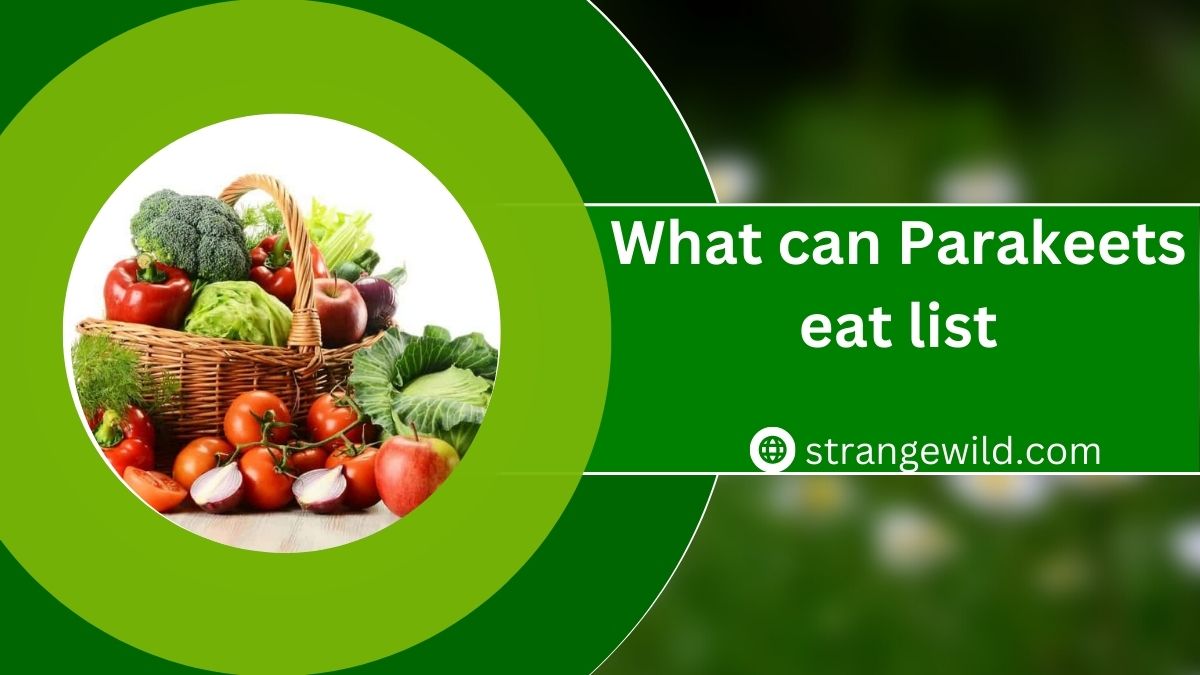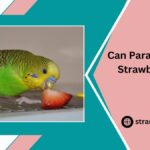What can Parakeets eat list? You need to know
One of the most crucial things to understand if you want to raise birds is what they can and cannot consume. Yes, the traditional diet of seeds exists, but may there be more to it? I’ll be focusing primarily on parakeets in this essay. What can Parakeets eat list? Parakeets eat fruit
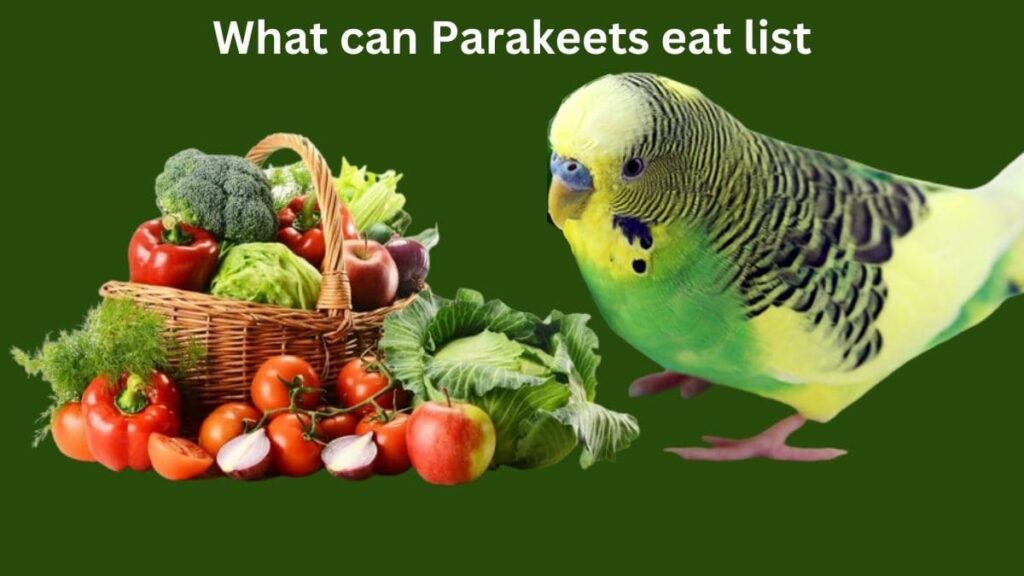
What can Parakeets eat list?
A wide range of fresh fruits and vegetables can be consumed by parakeets. They can also consume items like chicken and eggs that are consumed by humans. Chocolate, fruit pits, apple seeds, avocado, and foods heavy in fat, sodium, and sugars are among the things to keep away from parakeets.
Seeds are not the only food that parakeets eat! After all, as evidenced by their diet, parakeets are tropical birds. Parakeets can and should eat a varied diet, just like people do, in order to stay healthy and get the necessary vitamins we require.
Parakeets may eat a wide variety of foods because they are excellent suppliers of vitamins.
Of fact, there are many more fruits that a parakeet should be able to eat than my succinct answer can list and describe.
Fruits and Their Parakeet Benefits: What can Parakeets eat list?
Fruits are a great source of antioxidants, vitamins, and minerals.
- Apples
- Oranges
- Bananas
- Grapes
- Coconut
- Pineapple
- Mango
- apricots: A substance called beta-carotene, which is abundant in both apricots and mangoes, is turned into vitamin A.
- Cherries
- Blueberries
- Blackberries
- Melons
- Strawberries: You won’t have to worry about removing the seeds from strawberries because birds may safely consume them.
Keep in mind that only fresh fruits should be given to birds.
You and your friend would be best off if you avoided dried or packaged fruits entirely due to the added preservatives and colors that might be harmful to your bird.
Fruits like Apples, Oranges, Bananas, Grapes, Coconut, Pineapple, Mango, Apricots, Cherries, Blueberries, Blackberries, Melons, and Strawberries are good sources of vitamins and nutrition for parakeets. Fruits like Apples, Oranges, Bananas, Grapes, Coconut, Pineapple, Mango, Apricots, Cherries, Blueberries, Blackberries, Melons, and Strawberries are good sources of vitamins and nutrition for parakeets.
Parakeet-friendly vegetables
Granivores, like parakeets, eat primarily seeds and grains for food. However, the standard store-bought seed diet does not include all of these essential vitamins, thus vegetables play a crucial role in their diet.
Fresh veggies like broccoli provide parakeets with critical vitamins like vitamins A, B, C, and calcium. Vitamins A, E, and K are plentiful in spinach and alfalfa sprouts.
Other excellent vegetables that your parakeet can consume are:
- Kale, romaine lettuce, sprouting seeds, and dandelion leaves are examples of leafy vegetables. These vegetables are a powerhouse of calcium, iron, fiber, and vitamins K and C. Just make sure you thoroughly rinse them first!
- Carrots
- Corn
- Peas
- Celery
- Zucchini
- Potatoes
- Asparagus
- Cucumber
- Cooked beans are a great source of protein and the high fiber content will help your parakeet’s digestive tract stay in good working order. Make sure the beans are cooked; birds cannot consume raw beans.
Verify that you are giving your bird friend fresh vegetables, just like you would fruits.
A parakeet should have between 1/2 and 3/4 cups of fresh fruits and vegetables daily, according to recommendations. Can Parakeets Eat Strawberries?
For parakeets, nuts: What can Parakeets eat list?
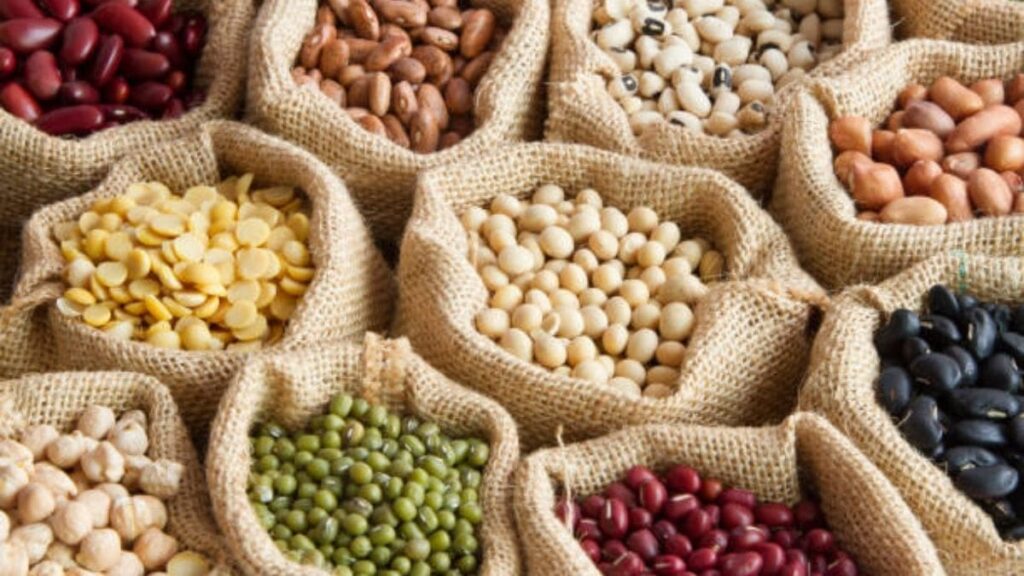
Nuts are packed with nutrients that your parakeet is likely not getting from other sources. They also enjoy nuts, so
- Almonds
- Pistachios
- Peanuts
- Walnuts
- Pecans
Because their throats are so small, make sure the nuts are chopped before giving them to your bird. Additionally, they can’t swallow the nuts whole because they are all larger than their heads.
Additionally, make sure that shells are not there because your parakeet won’t be interested in them.
Additional Foods Safe for Pet Parakeets
There are many items that humans can eat that parakeets can also enjoy, including ones that you probably have never considered before:
Pellets: Another important component of a parakeet’s diet is pellets. Purchase high-quality bird pellets from a pet store or your veterinarian; grocery store brands contain unhealthful artificial coloring, tastes, and preservatives.
Protein: While a parakeet’s seed combinations can provide protein, there are other protein-rich foods that are beneficial for birds, including hard-boiled eggs, tuna packed in water, and other cooked meats like chicken. Just make sure the meat is fully cooked before you give it to your feathered friend.
Another excellent source of protein is corn, either raw or cooked. If you choose to give your bird extra protein in this method, bear in mind that parakeets should only receive a small amount of fresh protein (about the size of a fingertip) every two weeks.
Keep in mind that your parakeet would be munching on protein-rich things like bugs and worms if it were still a wild animal.
It will make up for it by receiving small amounts of protein in addition to its seed diet.
Baby food: Weird, isn’t it? giving a pet baby food? Of course, some parakeet owners choose to feed their birds baby food (as long as it is made from all-natural ingredients and contains vegetables). If you don’t have any fresh vegetables on hand, it is practical.
Bread: You can break up whole grain bread and give it to your bird in little pieces. Simple whole-grain bread is best because sugary bread could include substances that are poisonous to parakeets. Rusks and dry rolls are two creative ways to change up bread (twice-baked bread).
Cuttlebone: Cuttlebones are those flat, oval-shaped discs that you can find in the pet store’s bird area. It is, as its name suggests, the internal skeleton of the cuttlefish, a type of cephalopod.
It is a wonderful source of calcium and other nutrients, and it can also be used to keep your bird’s beak and claws in check. Simply hang it in their cage and let them eat away. Which are difficult for them to obtain otherwise.
Parakeet Snacks & Treats: What can Parakeets eat list?
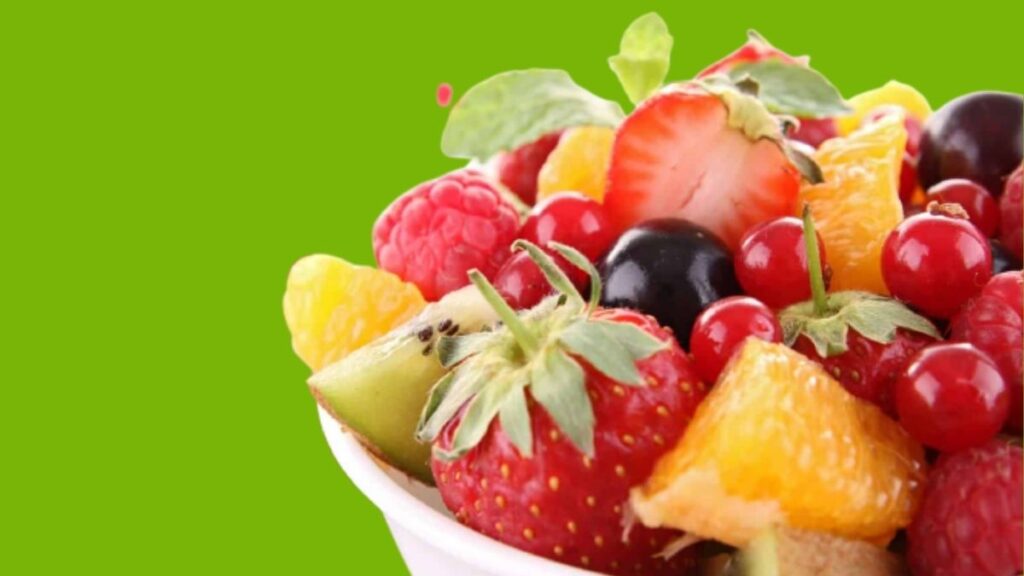
Parakeets enjoy receiving occasional goodies just like any other person or animal. There are numerous methods you can care for your parakeet, including:
Almond butter: It’s a delicious treat for parakeets and yet another excellent source of protein. To feed your bird companion, try spreading some on a celery stick.
Pasta: Birds adore pasta, whether it is cooked or raw! They are packed with carbs, which raise a bird’s level of energy. Try combining pasta with the vegetables that your parakeet prefers. You can give some raw macaroni noodles stuffed with nut butter to birds who enjoy a crunch. Any cooked spaghetti that is fed should be chilled.
Honey: Parakeets like the incredibly sweet delight of honey. Honey should only be consumed on exceptional occasions because it contains a lot of calories.
Millet: Millets are tiny grass seeds. They have long been a mainstay for birds and other creatures. Spraying millet, which resembles corn on the cob or a stick with a bump of faux strawberries all over it, or white proso millet, which is a favorite of most birds, is something I would advise doing.
If fastened to the interior of the cage, spray millet can make a little bit of a mess; one solution is to hang it from the cage’s ceiling.
It’s crucial to make sure your parakeet is eating regular food; otherwise, they can start mistaking seeds for rewards.
A child who consumes excessive amounts of candy may become hyper and then crash due to an upset stomach, and the calories may result in weight gain.
When given too many of these delicacies, like honey and millet, they may gain weight and develop other health issues because they are mostly sugars and calories with little nutritional benefit.
Foods that Are the Worst for Parakeets
Chocolate: Parakeets are similarly harmful to chocolate, as you may already be aware. Chocolate includes theobromine and caffeine, which, if consumed in dangerous amounts, can make animals hyperactive, raise their heart rates, tremble, and even cause seizures. The more bitter and black the chocolate, the more poisonous it is for your pet.
Onion/Garlic: Thiosulphate, a chemical found in onions and garlic, is poisonous to animals. Ingestion of these foods can result in gastroenteritis, or inflammation of the stomach and intestines, as well as hemolytic anemia, a condition when the red blood cells in a pet’s body explode.
Comfrey: A plant known as comfrey is recognized by its tiny, bell-shaped, purple or magenta-colored flowers. Studies on human medicine show that this herb damages the liver.
Avocado: Persin, a fungicidal toxin found in avocado plants, is extremely harmful to birds, especially smaller birds. When consumed, the individual may result in heart damage, breathing problems, weakness, and even death.
Apple seeds and fruit seeds: While an apple’s fruit is acceptable for pet birds to eat, the seeds should always be removed because they contain cyanide. You should never let your bird eat on pits from other fruits, such as cherries, plums, apricots, or peaches because they all contain cyanide. What can Parakeets eat list?
Foods that are high in fat, sodium, and sugar: Despite not being toxic, these high amounts of table food can have detrimental effects on the health of birds. A bird’s electrolyte and fluid balance can be thrown off by too much salt, which can result in excessive thirst, dehydration, kidney failure, and even death. Give your birds a potato or carrot that hasn’t been seasoned, for instance, if you’re planning to bake some of those in the oven.
Candy without sugar: These candies have xylitol in them, which has been linked to severe hypoglycemia and liver damage.
Certain plants: Eggplants, potatoes, and peppers are okay for birds to consume, but the plants themselves are poisonous. Oxalate crystals are present in the rhubarb plant’s leaves, and these crystals can harm the kidneys.
Foods That Are Not Toxic, But Are Not Recommended for Parakeets
Although not legally harmful to birds, the following items should still be avoided or provided in very small amounts:
Peanuts: Avoid eating moldy peanuts or peanut products as they may contain a fungus that produces toxins.
Dairy: An enzyme necessary for lactose fragmentation is absent in birds. Although technically non-toxic, too much dairy in a bird’s diet might cause diarrhea. Lean curd cheese is one type of cheese and yogurt that has little to no lactose, but even so, these items should only be consumed in moderation.
Mushrooms: Pets can consume mushrooms that are certified safe for human consumption. However, avoid eating or giving false morel (or Gyromitra) mushrooms to your bird. While boiling these mushrooms can reduce their toxicity, it does not entirely eliminate the risk of death.
Grit: When unwell, parakeets may eat a lot of grits, increasing their chance of developing an intestinal obstruction.
Crackers: Yes, certain crackers contain grain, which makes up 90% of a parakeet’s diet, but neither people nor birds benefit from their nutritional worth. There are many different items you might use to feed your bird instead.
Tomatoes: Because of their strong acidity, tomatoes are not suggested for your parakeet. There are exceptions, such as spaghetti sauce and dried tomatoes, since the acid is eliminated when these meals are prepared.
Feeding Advice for Your Pet Parakeet
Try experimenting with various foods to see what your parakeet likes, doesn’t like, and what their favorite foods are because every parakeet has different food preferences.
Always make sure the food you provide your bird is bite-sized. The usual weight of a parakeet is between 25 and 35 grams, or 0.8 and 1 ounce, making them exceptionally tiny and light creatures.
They won’t be able to break apart and consume a full head of broccoli or even a slice of an apple if you give it to them. What can Parakeets eat list?
Chop up their food for them so they may easily eat it, saving them the trouble. Giving your bird a bowl full of various fruits is one method to learn what kinds of foods they enjoy.
Remove any unfinished fruit at the end of the day to prevent spoilage inside the cage. Give them what they choose if they selectively consume some parts while disregarding others.
If you give your parakeet the same meal every day, they can grow tired of it. To keep them interested, change it up with a fruit kabob or hang them within their cage.
Warm fruit is also a favorite food of parakeets, so reheat their meal before serving them.
If you feed your bird any cooked food, make sure to wait until it has cooled before giving it to them. Human food is typically served hot, and while we can withstand some heat, parakeets can become severely burned. Keep your bird away from your dish to prevent them from eating anything it shouldn’t be.
If you enjoy eating with your bird, you can train them to use a little plate of their own so they won’t be tempted to grab food from your plate. Can Parakeets Eat Bananas?
Carbohydrates: What can Parakeets eat list?
Fruits and vegetables are incredibly nutritious and your budgie will happily take them (s). Lettuce, broccoli, carrot, corn, peas, spinach, and celery are a few vegetables that parakeets can safely eat and are nutrient-dense. Apples, tangerines, melons, bananas, mangoes, pineapples, and coconuts are among the available fruits. Budgerigar
For a more comprehensive list of eatable fruits, please refer to the FAQ section below. All non-organic fruit and vegetable pesticides and herbicides have enough chemical levels to kill parakeets because their bodies are too little to handle the toxicity, thus you must get organic versions of all these foods.
Additionally, it’s crucial to remember that apples have cyanide-containing seeds, so these seeds must be removed before giving the fruit to parakeets! Fruits should make up about 10% of your bird companion’s diet.
A budgie should consume about 50% veggies in its diet. Always remember that fruits include a lot of sugar, which will cause their feces to be more watery and impact your bird’s attitude and hunger toward more nutritious food. So it’s crucial to just give them small amounts of fruit!
As seeds and budgie pellets cannot replace the enzymes, vitamins, proteins (amino acids), and other nutrients included in fresh and raw foods, these vegetable and fruit nutrients are crucial to your budgie’s diet.
The diet of your budgie should also contain grains such as millet, buckwheat, oats, rye, barley, wheat, quinoa, spelled, Kamut, amaranth, and rice as additional beneficial sources of carbohydrates.
Some can be eaten raw, while others need to be soaked, boiled, or sprouted. Here you can find delicious and nutritious catering for many of these treats!
Related Questions: What can Parakeets eat list?

Are there some healthful foods that, under particular circumstances, should not be fed to birds?
Because sugar feeds the yeast, it should not be consumed by pet birds with candidiasis while they are being treated. Fruit is prohibited since fructose and sugar are the same things. Depending on their therapy, birds with avian gastric yeast may or may not be able to consume fruit. To ensure that you don’t unintentionally feed your birds the wrong thing, it’s crucial to review the proper bird diet with your veterinarian.
Do parakeets eat frequently?
Each month, parakeets typically consume one pound of birdseed. This equates to about 3 tablespoons daily. Nevertheless, this may vary based on their age and general state of health. You might wish to speak with a doctor if you suspect your parakeet is overeating or undereating.
Can parakeets eat banana?
Yes, parakeets may get a lot of fiber and potassium from bananas. Feather picking and other forms of violence are manifested in birds that do not eat fiber, which is an intriguing but terrifying discovery. A healthy and organized diet should include fruits like bananas.
Can birds eat banana?
The same little bird with feathers goes by the names budgies and parakeets.
Can parakeets eat strawberries?
Because of their little seeds, strawberries are one of those fruits that some people are hesitant to eat, yet parakeets can eat them just fine.
Can parakeets eat peanut butter?
Although birds enjoy snacks, peanut butter is not one that they should consume. Please be aware that fungi that develop on peanuts can kill budgies if they are exposed to them. These fungi release aflatoxins, which are dangerous to humans due to their carcinogenicity and were initially identified after the poison killed more than 100,000 turkeys.
Although humans can tolerate small amounts of it, parakeets cannot handle what we can. In addition to being toxic, butter and other nut butter are very high in fat, which could cause your pet partner to become obese and develop cardiovascular issues!
Can parakeets eat watermelon?
Watermelons are adored by parakeets. But please keep in mind that watermelons are high in sugar, which will mess up your budgie’s diet and make them less interested in eating more nutritious foods. So, eat in moderation! This typically refers to a few times per week, the same as with other fruits. Remember to portion the food appropriately for your parakeet’s diminutive size, just like you would with other fruits.
What should parakeets eat?
a diet rich in vitamins, minerals, and a variety of carbs, proteins, and fats. For further details on nutrition, please visit the section above titled “What Should I Feed My Parakeet?”
Can parakeets eat crackers?
Crackers are not very nutrient-dense, and the salt content of many crackers may overflow the kidneys of a parakeet, causing kidney stones or other urinary issues. Given that there are other, more nutrient-dense foods available, crackers are maybe best be used as an occasional snack. Because crackers and other similar items can easily fill them up, be cautious of best budgie food practices when feeding them!
Can parakeets eat in the wild?
Our domesticated parakeets are bred to be sedentary due to domestication. They would not become accustomed to the elements because of this and the lives they often lead. The potential of the parakeet taking off and never returning home exists as well.
However, there are parakeet harnesses that enable owners to release their pets while they are attached to a stationary item or their wrist. However, since we have not tested these harnesses, we are unable to state with certainty how reliable they are.
Conclusion: What can Parakeets eat list?
Remember that the science and research behind the parakeets’ diet are still in their infancy and are constantly evolving. We began by giving our birds what they requested (seeds), which lacked the proper nutrients. Then, using tightly packed pellets, we overcompensated. Instead of relying on extremes, we should return to the fundamentals and use what nature has already given us.
Just. Plain. For information on your bird’s specific dietary requirements, speak with your avian veterinarian. Please share this article and leave a comment to let us know what you think. It gives us wings to hear from our consumers, so we adore it! Enjoy your fantastic day.

